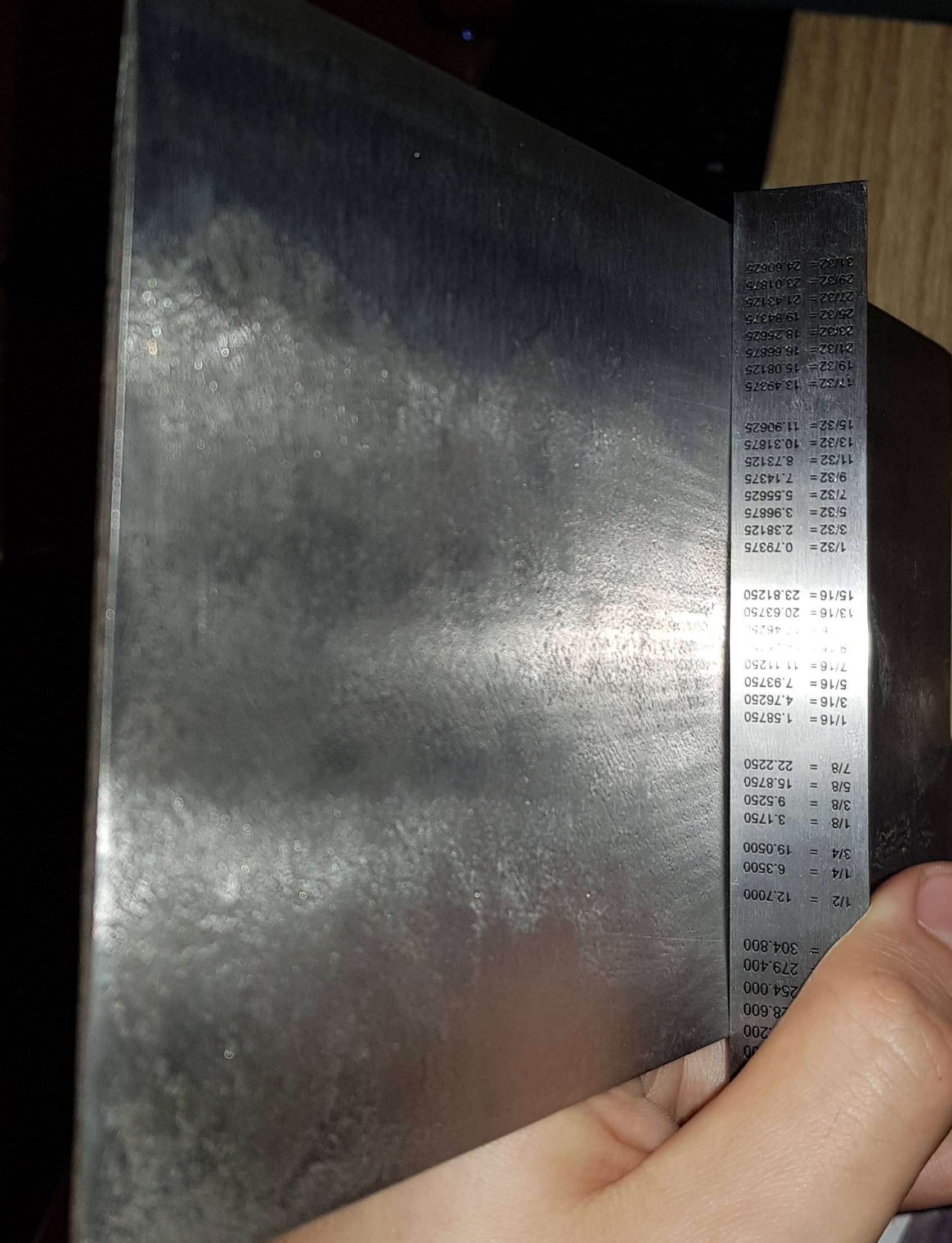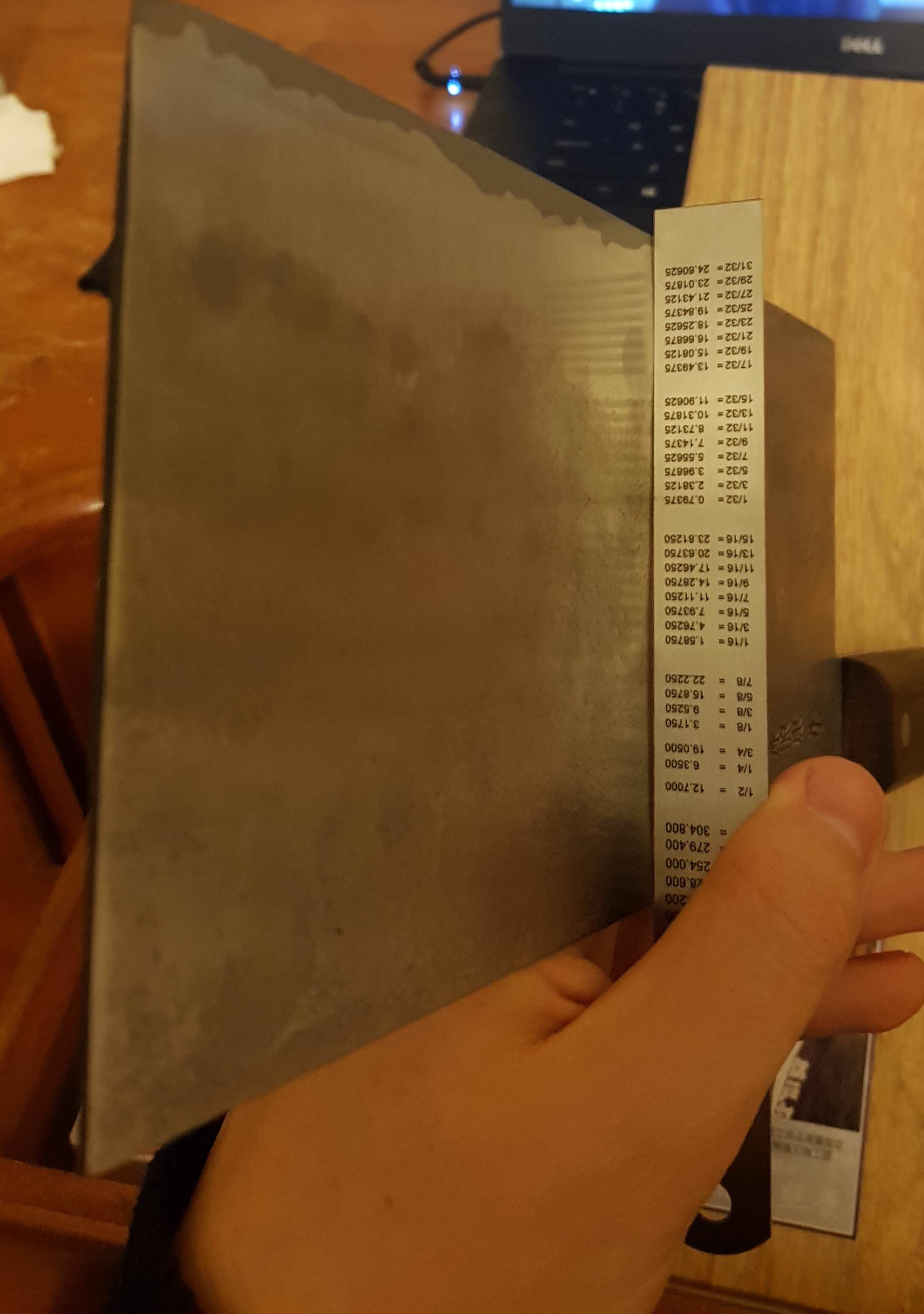So I just got a new Fujiwara Teruyasu Chinese cleaver and there is a very slight bend in the blade. The bend is what I would describe as parallel to the spine, so the spine and edge are perfectly straight but there is a slight concavity on the right hand side of the knife and slight convexity on the left hand side. It is berely perceptible to the eye but you can just about see the bend if looking down the length from the choil or `tip' end. It is a very small amount, the spine is 3mm at thickest and the bend does not cause the edge to bend `past this' if that makes sense, i.e. the edge is within the boundary defined by thinking of the knife as 3mm thick all over. So the bend cannot be more than a 1.5mm in total over 110mm of height from spine to edge. The knife is san mai with stainless on the outside (don't know what kind) and white #1 on the inside.
The bend is small enough that it doesn't seem to affect cutting performance or cause missed aim (with such a large knife you've got to watch the edge when doing detailed work anyway) However, as I guess most people here are, I'm a little obsessive about this sort of thing and it is annoying me enough to want to try fixing it.
But I have no idea if this is possible or safe to try. My guess would be that the best thing to do would be to get a strong vice, preferable larger than the size of the blade, and simply clamp the knife with some wood on the outside to protect it. Leaving it clamped fairly tight for a reasonable amount of time and perhaps slowly tightening further as/if the bend is decreased?
I'd rather not try anything that requires heating the knife above normal usage temperatures since I'm not confident about my ability to avoid over heating it (and FT heat treat is one of the things that they are praised for so I really don't want to ruin it). The bend is not a bad enough problem to take any serious risk of breaking the knife or reducing the quality of its edge.
Anyway, please share your ideas about whether this is possible to fix, and what might be the best method of doing so with as little risk as possible.
Mods: I figured this fitted better in this forum than the main one but please move it if you think it should go somewhere else.
The bend is small enough that it doesn't seem to affect cutting performance or cause missed aim (with such a large knife you've got to watch the edge when doing detailed work anyway) However, as I guess most people here are, I'm a little obsessive about this sort of thing and it is annoying me enough to want to try fixing it.
But I have no idea if this is possible or safe to try. My guess would be that the best thing to do would be to get a strong vice, preferable larger than the size of the blade, and simply clamp the knife with some wood on the outside to protect it. Leaving it clamped fairly tight for a reasonable amount of time and perhaps slowly tightening further as/if the bend is decreased?
I'd rather not try anything that requires heating the knife above normal usage temperatures since I'm not confident about my ability to avoid over heating it (and FT heat treat is one of the things that they are praised for so I really don't want to ruin it). The bend is not a bad enough problem to take any serious risk of breaking the knife or reducing the quality of its edge.
Anyway, please share your ideas about whether this is possible to fix, and what might be the best method of doing so with as little risk as possible.
Mods: I figured this fitted better in this forum than the main one but please move it if you think it should go somewhere else.






